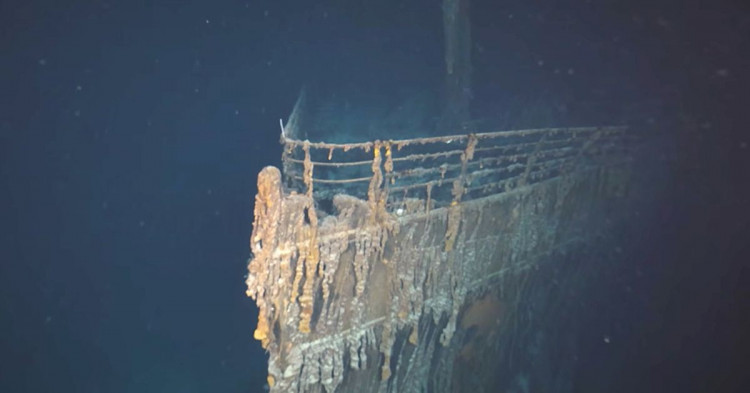The mystery of a sonar "blip" that had gone unsolved for 26 years has been answered.
The blip was first spotted in 1998 by Titanic diver PH Nargeolet, who was diving near the Titanic wreck 2,900 meters deep in the North Atlantic Ocean. OceanGate's 2022 Titanic Expedition, which was initially thought to be a second wreckage, has instead revealed a thick and active ecology.
Nargeolet and his colleagues were able to document a deep sea reef teeming with marine life on an expedition to the Titanic shipwreck earlier this year.
"We didn't know what we would discover," Nargeolet said. "On the sonar, this could have been any number of things including the potential of it being another shipwreck."
The basalt ridge, which has been given the provisional name Nargeolet-Fanning Ridge in honor of Nargeolet and Oisin Fanning, the expedition's mission specialist, was home to a variety of marine life as seen by the researchers, including sponges, corals, fish, lobsters, and more.
Water samples from the region have been gathered for environmental DNA analysis along with video and photo evidence. This will make it possible to assess the reef's level of richness and give important insights into how deep-sea marine life endures, thrives, and disperses.
In order to better understand how sponges and corals are able to spread throughout the ocean so widely, scientists will also utilize computer models to determine how life is thriving where it is.
All of this contributes to ongoing research into how climate change affects the oceans, and how these sensitive ecosystems might adapt and survive as the waters warm.
"We need to share this information with the scientific community and policymakers to be sure these vulnerable ecosystems get the proper attention and protection they deserve," marine biologist Murray Roberts from the University of Edinburgh in the UK, said.
Finding differences between the Nargeolet-Fanning Ridge and the well-known shipwreck it is close to in terms of the kinds of life, the concentration of creatures, and the composition of the overall ecosystem is an intriguing line of research.
In 2023, OceanGate will continue its research of the Titanic and its surroundings, giving us even more knowledge about the interesting activities that take place in these deep-sea ecosystems.
The crew is eager to share its discoveries with other researchers in order to advance our understanding of deep-sea life, even if it will take some time to sift through all of the photos and videos from the most recent dive.






